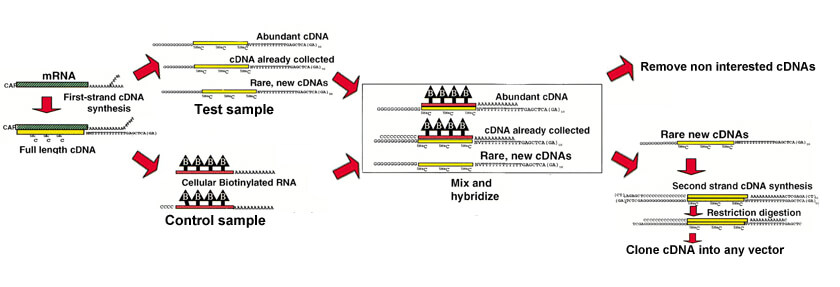Our promise to you:
Guaranteed product quality, expert customer support.
 24x7 CUSTOMER SERVICE
24x7 CUSTOMER SERVICE
 CONTACT US TO ORDER
CONTACT US TO ORDER
Our promise to you:
Guaranteed product quality, expert customer support.
 24x7 CUSTOMER SERVICE
24x7 CUSTOMER SERVICE
 CONTACT US TO ORDER
CONTACT US TO ORDER
Creative Biogene is one of the leading biotechnology companies which can provide high quality subtractive cDNA library construction services for customers worldwide. Creative Biogene's proprietary, self-subtraction/ tissue-tissue subtraction techniques and highly experienced staffs are able to irrelevant abundant sequences 10-100 folds, making it easier to find rare or low-expressed target genes. Besides, with years of experience in the cDNA library construction field, Creative Biogene can provide the most affordable subtractive cDNA library construction services with fastest turnaround time to satisfy your downstream needs.
 Schematic diagram of the subtractive cDNA library construction [1]
Schematic diagram of the subtractive cDNA library construction [1]
A subtractive cDNA library is a collection of cDNA clones which is rare and likely to be poorly expressed. Subtractive cDNA libraries are produced using a proprietary technique which relies on the removal of dsDNA formed by hybridization between a control and test sample, thus eliminating cDNAs of similar abundance and retaining the transcripts which are differentially expressed or variable in sequence. As a leading supplier in cDNA library construction services, Creative Biogene can provide you with high-quality subtractive cDNA library construction services to ensure your satisfaction in a timely and professional manner.
Applications:
Features:
Creative Biogene offers subtractive cDNA library construction services for your scientific research as follows:
References: